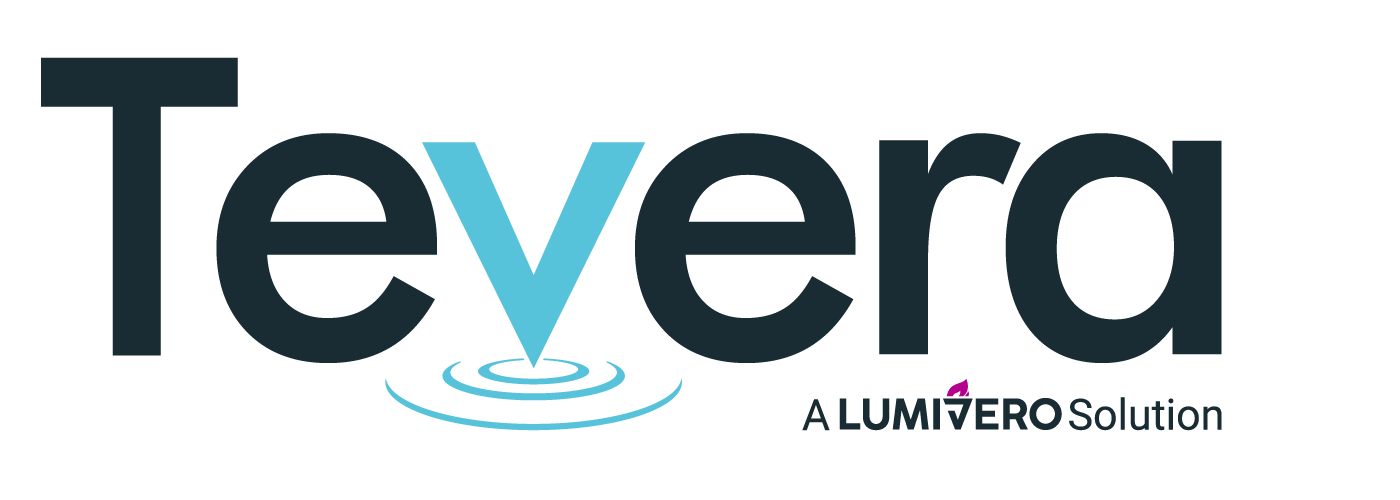Exploring Distance, Blended, and Face-to-Face Course Formats
Distance learning has grown in popularity in recent years. Now, as a result of COVID-19, schools across the globe are scrambling to take their programs online to continue educating their students. Regardless if your program is normally online or is temporarily remote, the rise in online learning is undeniable. Social work and counselor education programs are no exception to this pattern.
To stay competitive and attract students, social work and counselor education programs with all types of course formats would do well to learn from what each delivery method does well.
An Overview of Distance, Blended, vs. Face-to-Face Learning Experiences
Face-to-Face Classes
Traditional, face-to-face learning will never fully go out of style. It’s impossible to replicate the relationship-building that happens when two or more people are in the same room. However, this advantage is also it’s largest disadvantage. Students and faculty members must be in the room to participate.
The cost of higher education has increased by 112% in the last twenty years and as students are going back to school later in life, programs must accommodate multiple methods of learning to meet the changing needs and expectations of students.
Distance Learning
One of the largest hurdles fully remote programs have had to overcome is the perception that education suffers when it’s not done in person. However, distance education gains credibility each year as more “big name” schools launch online offerings.
Taking classes online allows schools to broaden their student base and reach more people than would otherwise be able to attend. It also further opens the door for students who work full-time, have family needs, or other scheduling conflicts that might prevent them from enrolling in a fully face-to-face program.
Blended Learning
Many programs are launching courses in a blended format. These partially face-to-face and partially online classes are the best of both worlds. Students build relationships with each other while having more flexibility than traditional courses to complete assignments on their own time.
The key to all of these formats isn’t which format a program chooses, rather how well thought-out the delivery of the course is. Each format has its own share of pros and cons and the most valuable courses will embrace their strengths while working on mitigating the inherent weaknesses.
The experience of being in a classroom versus learning on a laptop are inherently different and programs must embrace the differences to build a successful curriculum. We’ve identified five crucial needs that programs of all formats must meet: a way to communicate, collecting feedback, a way to stay on track, engagement, and the right tools. We’ll walk through how fully remote, blended, and fully in-person programs can meet these needs and continue to provide their students with an excellent education.
You Need a Way to Communicate
The need to communicate is so central to a successful educational experience that it is almost so obvious that we forget about it. With face-to-face classes, communication isn’t a hurdle. Students either pay attention to what they hear, or they don’t. Additional communications can take place via email or through learning management systems like Canvas or Blackboard.
However, when classes go online for remote or blended programs, communication becomes a little bit more difficult. Email and learning management systems still are central for two-way and group collaboration and conversation but often fall short of replicating the in-person experience.
So how does a program keep communication strong, regardless of class format?
Embrace multiple channels of communication. Hold office hours via phone or video conferencing. Open discussion boards in your learning management system. For more robust group discussions, consider breaking classes down into smaller groups and creating a set of questions for each board.
The important thing is not how you’re communicating, it’s what and how often you’re communicating. Making deadlines and expectations clear has always been important but is especially so when classes don’t meet face-to-face.
You Need the Ability to Collect Feedback
Your students shouldn’t still be turning in hard copies of assignments. That may be controversial and we admit, there’s nothing quite like sitting with a paper and a red pen. Unfortunately, students don’t operate that way anymore.
Consider the process of writing a paper. The research is done online. They write the paper on their computer via Word or Google Docs. They edit their paper on their computer, maybe even using online tools like Grammarly. If it’s a group project, they’re collaborating via email or a shared document. All of it is on their computer.
But if students have to print out that project, they either need to own a printer (and be fully stocked with paper and ink), go to a printing service, or use the University’s library.
Most learning management systems allow online assignment submissions. And most, including Tevera, allow online feedback so professors can tell students what they did right or wrong, no red pen necessary.
You Need a Way to Stay on Track
A syllabus is a valuable tool but it’s not enough. And for counselor education and social work programs that also have internships and field placements as part of their students’ journey, a single document falls short of being everything a student needs to succeed.
Students need:
- The ability to track hours in support of graduation and licensure,
- The ability to visualize where they’re at in their educational career,
- A way to track their progress on projects,
- Multiple ways to reach out for assistance when they need help.
You Need a Way for Everyone to Stay Engaged
If you’re building any type of e-Learning course, forget the hour-plus lecture format. Consider the rise in popularity of short videos on every social media channel. There’s a reason for this: people have short attention spans. If they’re trying to get their schoolwork done outside of the classroom, they may be doing it during a bus ride or at home with distractions occurring all around them.
Utilize discussion boards, small group chats, and modules within your learning management system to make it easy for students to stay engaged and up-to-date on their classwork. Embrace video recordings and keep them to one topic per video and preferably under ten minutes.
You Need Flexible Tools That Are Easy to Use, Accessible, and Secure
It’s not enough to use one learning management system and one video conferencing system and call your distance learning toolbox complete, especially for behavioral health programs that require field experience and unique student journeys.
When considering digital resources, keep these three things in mind:
- Usability Design – You and your students don’t have the time to learn a new software system. Nor should you have to. Make sure the tools you’re using are intuitive enough to begin using right away to avoid additional training costs and downtime as people try to figure out how it works.
- Accessibility – Your software must be accessible. If your students who have visual, motor, or cognitive impairments are unable to use your software tools, you will risk alienating them and in the long-term, reputational damage to your program and even lawsuits. Ask the vendors you’re considering about how they’re meeting accessibility standards. (Learn more by reading our article about digital accessibility.)
- Security – You are obligated to make sure that any software you use or have your students use is secure. The last thing your program needs is a preventable data breach.
Find the Right Tools to Manage Your Format’s Complexity
There’s no right or wrong answer when choosing a class format. However, both fully remote and fully face-to-face programs must recognize what strengths the other type offers and adapt new practices to strengthen their students’ education. Programs also need to keep an eye on higher education trends to stay competitive and attract students, especially as the needs and expectations of students change.
By focusing on effective methods of communication, gathering feedback, keeping everyone on track, and keeping course materials engaging, any format will be successful. However, as course delivery becomes increasingly complex, having the right software tools will only grow more important.
SOLUTIONS
RELATED POSTS
PRODUCT OVERVIEW
See how Tevera can elevate your program.
Exploring Distance, Blended, and Face-to-Face Course Formats
Distance learning has grown in popularity in recent years. Now, as a result of COVID-19, schools across the globe are scrambling to take their programs online to continue educating their students. Regardless if your program is normally online or is temporarily remote, the rise in online learning is undeniable. Social work and counselor education programs are no exception to this pattern.
To stay competitive and attract students, social work and counselor education programs with all types of course formats would do well to learn from what each delivery method does well.
An Overview of Distance, Blended, vs. Face-to-Face Learning Experiences
Face-to-Face Classes
Traditional, face-to-face learning will never fully go out of style. It’s impossible to replicate the relationship-building that happens when two or more people are in the same room. However, this advantage is also it’s largest disadvantage. Students and faculty members must be in the room to participate.
The cost of higher education has increased by 112% in the last twenty years and as students are going back to school later in life, programs must accommodate multiple methods of learning to meet the changing needs and expectations of students.
Distance Learning
One of the largest hurdles fully remote programs have had to overcome is the perception that education suffers when it’s not done in person. However, distance education gains credibility each year as more “big name” schools launch online offerings.
Taking classes online allows schools to broaden their student base and reach more people than would otherwise be able to attend. It also further opens the door for students who work full-time, have family needs, or other scheduling conflicts that might prevent them from enrolling in a fully face-to-face program.
Blended Learning
Many programs are launching courses in a blended format. These partially face-to-face and partially online classes are the best of both worlds. Students build relationships with each other while having more flexibility than traditional courses to complete assignments on their own time.
The key to all of these formats isn’t which format a program chooses, rather how well thought-out the delivery of the course is. Each format has its own share of pros and cons and the most valuable courses will embrace their strengths while working on mitigating the inherent weaknesses.
The experience of being in a classroom versus learning on a laptop are inherently different and programs must embrace the differences to build a successful curriculum. We’ve identified five crucial needs that programs of all formats must meet: a way to communicate, collecting feedback, a way to stay on track, engagement, and the right tools. We’ll walk through how fully remote, blended, and fully in-person programs can meet these needs and continue to provide their students with an excellent education.
You Need a Way to Communicate
The need to communicate is so central to a successful educational experience that it is almost so obvious that we forget about it. With face-to-face classes, communication isn’t a hurdle. Students either pay attention to what they hear, or they don’t. Additional communications can take place via email or through learning management systems like Canvas or Blackboard.
However, when classes go online for remote or blended programs, communication becomes a little bit more difficult. Email and learning management systems still are central for two-way and group collaboration and conversation but often fall short of replicating the in-person experience.
So how does a program keep communication strong, regardless of class format?
Embrace multiple channels of communication. Hold office hours via phone or video conferencing. Open discussion boards in your learning management system. For more robust group discussions, consider breaking classes down into smaller groups and creating a set of questions for each board.
The important thing is not how you’re communicating, it’s what and how often you’re communicating. Making deadlines and expectations clear has always been important but is especially so when classes don’t meet face-to-face.
You Need the Ability to Collect Feedback
Your students shouldn’t still be turning in hard copies of assignments. That may be controversial and we admit, there’s nothing quite like sitting with a paper and a red pen. Unfortunately, students don’t operate that way anymore.
Consider the process of writing a paper. The research is done online. They write the paper on their computer via Word or Google Docs. They edit their paper on their computer, maybe even using online tools like Grammarly. If it’s a group project, they’re collaborating via email or a shared document. All of it is on their computer.
But if students have to print out that project, they either need to own a printer (and be fully stocked with paper and ink), go to a printing service, or use the University’s library.
Most learning management systems allow online assignment submissions. And most, including Tevera, allow online feedback so professors can tell students what they did right or wrong, no red pen necessary.
You Need a Way to Stay on Track
A syllabus is a valuable tool but it’s not enough. And for counselor education and social work programs that also have internships and field placements as part of their students’ journey, a single document falls short of being everything a student needs to succeed.
Students need:
- The ability to track hours in support of graduation and licensure,
- The ability to visualize where they’re at in their educational career,
- A way to track their progress on projects,
- Multiple ways to reach out for assistance when they need help.
You Need a Way for Everyone to Stay Engaged
If you’re building any type of e-Learning course, forget the hour-plus lecture format. Consider the rise in popularity of short videos on every social media channel. There’s a reason for this: people have short attention spans. If they’re trying to get their schoolwork done outside of the classroom, they may be doing it during a bus ride or at home with distractions occurring all around them.
Utilize discussion boards, small group chats, and modules within your learning management system to make it easy for students to stay engaged and up-to-date on their classwork. Embrace video recordings and keep them to one topic per video and preferably under ten minutes.
You Need Flexible Tools That Are Easy to Use, Accessible, and Secure
It’s not enough to use one learning management system and one video conferencing system and call your distance learning toolbox complete, especially for behavioral health programs that require field experience and unique student journeys.
When considering digital resources, keep these three things in mind:
- Usability Design – You and your students don’t have the time to learn a new software system. Nor should you have to. Make sure the tools you’re using are intuitive enough to begin using right away to avoid additional training costs and downtime as people try to figure out how it works.
- Accessibility – Your software must be accessible. If your students who have visual, motor, or cognitive impairments are unable to use your software tools, you will risk alienating them and in the long-term, reputational damage to your program and even lawsuits. Ask the vendors you’re considering about how they’re meeting accessibility standards. (Learn more by reading our article about digital accessibility.)
- Security – You are obligated to make sure that any software you use or have your students use is secure. The last thing your program needs is a preventable data breach.
Find the Right Tools to Manage Your Format’s Complexity
There’s no right or wrong answer when choosing a class format. However, both fully remote and fully face-to-face programs must recognize what strengths the other type offers and adapt new practices to strengthen their students’ education. Programs also need to keep an eye on higher education trends to stay competitive and attract students, especially as the needs and expectations of students change.
By focusing on effective methods of communication, gathering feedback, keeping everyone on track, and keeping course materials engaging, any format will be successful. However, as course delivery becomes increasingly complex, having the right software tools will only grow more important.
Exploring Distance, Blended, and Face-to-Face Course Formats
Distance learning has grown in popularity in recent years. Now, as a result of COVID-19, schools across the globe are scrambling to take their programs online to continue educating their students. Regardless if your program is normally online or is temporarily remote, the rise in online learning is undeniable. Social work and counselor education programs are no exception to this pattern.
To stay competitive and attract students, social work and counselor education programs with all types of course formats would do well to learn from what each delivery method does well.
An Overview of Distance, Blended, vs. Face-to-Face Learning Experiences
Face-to-Face Classes
Traditional, face-to-face learning will never fully go out of style. It’s impossible to replicate the relationship-building that happens when two or more people are in the same room. However, this advantage is also it’s largest disadvantage. Students and faculty members must be in the room to participate.
The cost of higher education has increased by 112% in the last twenty years and as students are going back to school later in life, programs must accommodate multiple methods of learning to meet the changing needs and expectations of students.
Distance Learning
One of the largest hurdles fully remote programs have had to overcome is the perception that education suffers when it’s not done in person. However, distance education gains credibility each year as more “big name” schools launch online offerings.
Taking classes online allows schools to broaden their student base and reach more people than would otherwise be able to attend. It also further opens the door for students who work full-time, have family needs, or other scheduling conflicts that might prevent them from enrolling in a fully face-to-face program.
Blended Learning
Many programs are launching courses in a blended format. These partially face-to-face and partially online classes are the best of both worlds. Students build relationships with each other while having more flexibility than traditional courses to complete assignments on their own time.
The key to all of these formats isn’t which format a program chooses, rather how well thought-out the delivery of the course is. Each format has its own share of pros and cons and the most valuable courses will embrace their strengths while working on mitigating the inherent weaknesses.
The experience of being in a classroom versus learning on a laptop are inherently different and programs must embrace the differences to build a successful curriculum. We’ve identified five crucial needs that programs of all formats must meet: a way to communicate, collecting feedback, a way to stay on track, engagement, and the right tools. We’ll walk through how fully remote, blended, and fully in-person programs can meet these needs and continue to provide their students with an excellent education.
You Need a Way to Communicate
The need to communicate is so central to a successful educational experience that it is almost so obvious that we forget about it. With face-to-face classes, communication isn’t a hurdle. Students either pay attention to what they hear, or they don’t. Additional communications can take place via email or through learning management systems like Canvas or Blackboard.
However, when classes go online for remote or blended programs, communication becomes a little bit more difficult. Email and learning management systems still are central for two-way and group collaboration and conversation but often fall short of replicating the in-person experience.
So how does a program keep communication strong, regardless of class format?
Embrace multiple channels of communication. Hold office hours via phone or video conferencing. Open discussion boards in your learning management system. For more robust group discussions, consider breaking classes down into smaller groups and creating a set of questions for each board.
The important thing is not how you’re communicating, it’s what and how often you’re communicating. Making deadlines and expectations clear has always been important but is especially so when classes don’t meet face-to-face.
You Need the Ability to Collect Feedback
Your students shouldn’t still be turning in hard copies of assignments. That may be controversial and we admit, there’s nothing quite like sitting with a paper and a red pen. Unfortunately, students don’t operate that way anymore.
Consider the process of writing a paper. The research is done online. They write the paper on their computer via Word or Google Docs. They edit their paper on their computer, maybe even using online tools like Grammarly. If it’s a group project, they’re collaborating via email or a shared document. All of it is on their computer.
But if students have to print out that project, they either need to own a printer (and be fully stocked with paper and ink), go to a printing service, or use the University’s library.
Most learning management systems allow online assignment submissions. And most, including Tevera, allow online feedback so professors can tell students what they did right or wrong, no red pen necessary.
You Need a Way to Stay on Track
A syllabus is a valuable tool but it’s not enough. And for counselor education and social work programs that also have internships and field placements as part of their students’ journey, a single document falls short of being everything a student needs to succeed.
Students need:
- The ability to track hours in support of graduation and licensure,
- The ability to visualize where they’re at in their educational career,
- A way to track their progress on projects,
- Multiple ways to reach out for assistance when they need help.
You Need a Way for Everyone to Stay Engaged
If you’re building any type of e-Learning course, forget the hour-plus lecture format. Consider the rise in popularity of short videos on every social media channel. There’s a reason for this: people have short attention spans. If they’re trying to get their schoolwork done outside of the classroom, they may be doing it during a bus ride or at home with distractions occurring all around them.
Utilize discussion boards, small group chats, and modules within your learning management system to make it easy for students to stay engaged and up-to-date on their classwork. Embrace video recordings and keep them to one topic per video and preferably under ten minutes.
You Need Flexible Tools That Are Easy to Use, Accessible, and Secure
It’s not enough to use one learning management system and one video conferencing system and call your distance learning toolbox complete, especially for behavioral health programs that require field experience and unique student journeys.
When considering digital resources, keep these three things in mind:
- Usability Design – You and your students don’t have the time to learn a new software system. Nor should you have to. Make sure the tools you’re using are intuitive enough to begin using right away to avoid additional training costs and downtime as people try to figure out how it works.
- Accessibility – Your software must be accessible. If your students who have visual, motor, or cognitive impairments are unable to use your software tools, you will risk alienating them and in the long-term, reputational damage to your program and even lawsuits. Ask the vendors you’re considering about how they’re meeting accessibility standards. (Learn more by reading our article about digital accessibility.)
- Security – You are obligated to make sure that any software you use or have your students use is secure. The last thing your program needs is a preventable data breach.
Find the Right Tools to Manage Your Format’s Complexity
There’s no right or wrong answer when choosing a class format. However, both fully remote and fully face-to-face programs must recognize what strengths the other type offers and adapt new practices to strengthen their students’ education. Programs also need to keep an eye on higher education trends to stay competitive and attract students, especially as the needs and expectations of students change.
By focusing on effective methods of communication, gathering feedback, keeping everyone on track, and keeping course materials engaging, any format will be successful. However, as course delivery becomes increasingly complex, having the right software tools will only grow more important.



















